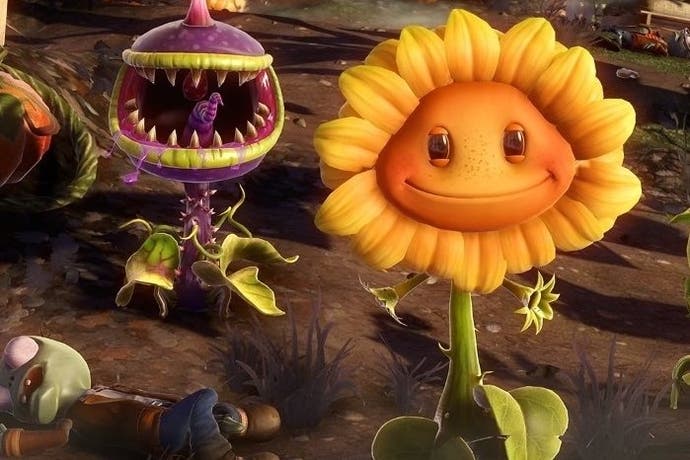Face-Off: Plants vs Zombies: Garden Warfare on PS4
Thymed exclusive.
Plants vs Zombies: Garden Warfare made a solid debut when the game launched on the Xbox 360 and Xbox One, with PopCap successfully re-imagining its mobile strategy game as an addictive, criminally overlooked tower defence-style shooter. While the 360 struggled with the demanding Frostbite 3 engine, the experience shined on the Xbox One, where the massive jump in processing power delivered frequently smooth 60fps gameplay at a reasonably sharp 900p native resolution.
Announced as a timed exclusive for Microsoft platforms, Garden Warfare made its way over to the PC back in June and only just launched on Sony's two consoles in the last week. But despite the delay, the game was aplanned as a multiplatform project from the start, and PopCap Games appears keen to get the most out of the PS4 regardless.
"We're especially excited for fans to experience Plants vs Zombies Garden Warfare on PS4, where it will be playable at a native 1080p resolution and blazing fast 60 frames per second," PopCap's Gary Clay said, confirming to Eurogamer earlier in the year that the PS4 version would benefit from a 44 per cent boost in resolution over the Xbox One game, closely in-line with the gap in raw GPU power between the two consoles.
But does the jump in per-pixel rendering impact performance compared to the solid Xbox One release? And what about the PC game? Bearing in mind that the Frostbite 3 engine is designed to easily scale up to take advantage of high-end PC hardware, are we getting any significant upgrades that put this version ahead of the console ports?
Alternative comparisons:
- Plants vs Zombies: Garden Warfare - PlayStation 4 vs PC
- Plants vs Zombies: Garden Warfare - Xbox One vs PC
To kick things off, we can indeed confirm a native 1080p framebuffer for the PS4 version of Garden Warfare, backed up by what appears to be a post-process anti-aliasing solution along the lines of the stalwart FXAA. The giveaway comes in the form of a mild texture blur that gently smoothes over the finer details in the artwork, along with some spotty coverage across lower contrast edges. Even so, image quality is respectable with the distinctive style of the colourful art helping to alleviate some of these side effects.
The extra 44 percent of resolution over the Xbox One version certainly wins the numbers game, but the reality presents us with a slightly different picture. The PS4 game appears slightly more refined when closely scrutinising still images, but in motion the use of anti-aliasing and the game's distinct art style helps to reduce upscale artefacts on the Xbox One, thus delivering a very similar presentation.
On the PC side of things we opt for 1080p resolution to match the new consoles and dial up all the graphical settings as far as they will go. In most cases this means selecting the ultra preset, although some options (like anti-aliasing) are limited to high. Here we find that image quality matches the PS4 game, right down to the variable FXAA-like coverage and its effects on the artwork. Curiously, unlike Battlefield 4, there's no option to combine post-process AA with multi-sampling via the in-game menus.


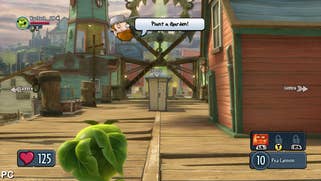



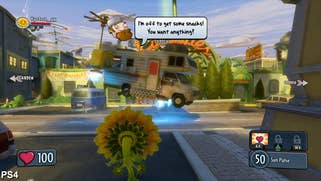
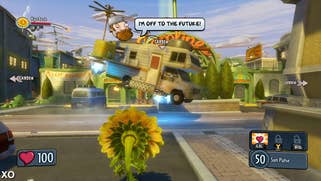
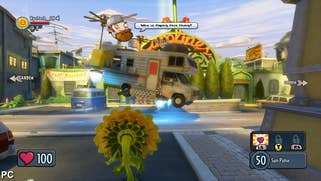
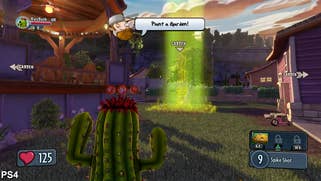
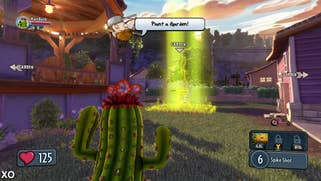

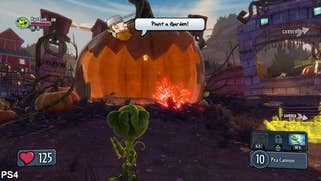

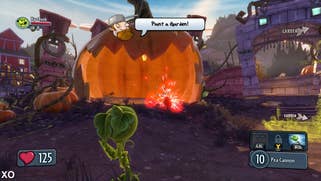

Using the Frostbite 3 engine, Garden Warfare delivers large and colourful environments on-screen that feature a solid sense of scale and scope regardless of which platform you care to play the game on. This is particularly evident during the Gardens and Graveyards mode, which sees maps open up as the match progresses, revealing sprawling locations that extend far into the distance. These expansive environments are replicated to the same high standard across both PS4 and Xbox One, but on the PC we find the grass to feature increased draw distance and density over the consoles leading to a fuller look to locations containing lots of greenery. Curiously, general foliage appears identical between platforms, and we didn't notice any obvious streaming differences with regards to the main artwork across the current-gen consoles and PC.
In other areas the scale and complexity of various smoke and particle effects are also closely matched across all formats - excluding the pared back last-gen versions of the game. The PC version of Garden Warfare also receives a boost to the lighting model via the use of HBAO (horizon-based ambient occlusion), which increases the amount of depth present in the scene by providing stronger indirect shadows with wider coverage across the environment.
Moving onto performance, the PS4 puts in a superb effort, offering up a practically locked 60fps experience that hardly ever deviates from its intended target. The action remains solidly v-synced, so we never see any tearing, while interruptions in smoothness are kept to a minimum. Hectic scenes that see copious amounts of particle and lighting effects thrown around the environments sometimes cause rare interruptions in fluidity, but as we're only looking at one or two frame drops at most, these mild dips in performance go by mostly undetected.
Indeed, despite pushing 44 per cent more pixels on-screen, the experience on PS4 is more consistent than on the Xbox One when the engine is under stress. When all hell breaks loose we see a heavier drop in performance on Xbox One, while the PS4 usually maintains its solid 60fps lock without any fuss. In these scenes Garden Warfare displays an extra layer of fluidity on the Sony console - although we should point out that the core gameplay never feels compromised on the Xbox One. PS4 simply offers a slightly more refined version of the same experience.
The only time the action doesn't feel quite as smooth as it should be is when firing standard shots using the Pea Shooter zoomed in - every shot is accompanied by visible judder that resembles a drop in frame-rate. This phenomenon isn't isolated to any console and actually occurs across all versions of the game. Manually checking through our captures reveals no duplicates outside of actual frame-rate dips, so what is going on? Well, when some of the plants fire their weapons, the attack is accompanied by quick camera movements and a few jarring changes in animation, and this causes the appearance of uneven motion that simulates a dip in performance. Thankfully, the effect has no impact on controller response or any technical aspects concerning gameplay, although it is a little distracting.
Naturally, PC performance varies depending on what kind of hardware configuration you have, although Garden Warfare appears to be fairly easy to run on upper-mid-range gamings rigs while still targeting a 60fps refresh at 1080p. Our Intel Core i5 and GTX 680 machine delivered a perceptual 60fps experience quite similar to that of the Xbox One version of the game, but with the more sustained drops in performance in crowded gunfights, or in locations that feature long draw distance with more detailed scenery. Busy combat scenes see frame-rates drop down into the mid-forties in worst-case situations, but otherwise things appear more stable when traversing the environments or engaging in combat with a handful of enemies on-screen.
Plants vs Zombies: Garden Warfare - the Digital Foundry verdict
Arriving a few months after the Xbox One and 360 releases, the PS4 version of Plants vs Zombies: Garden Warfare doesn't disappoint, achieving native 1080p visuals that stick more closely to the 60fps update ideally required by an online shooter. The near rock-solid frame-rate keeps the controller response fast and consistent, although the boost in resolution - while welcome - is barely perceptible in motion. On consoles, the PS4 game offers up the best experience by a whisker, but the Xbox One game is almost equally outstanding and shouldn't be overlooked if the bulk of your gaming buddies are based on Xbox Live - the minor dips in performance have no impact on the gameplay while image quality still holds up superbly despite the resolution deficit.
PopCap has also taken the time to include a few features that expand upon the core gameplay experience and are exclusive to both current-gen platforms. It's possible to play Garden Warfare on the Vita via Remote Play, although this is limited to 30fps and incurs noticeable latency with regards to controller response. There's also a Boss Mode feature on PS4 and Xbox One that works as a companion experience on mobile devices via the PlayStation App, or can be controlled directly via Kinect on the Xbox One. Here players view the action from a top down perspective similar to that of Battlefield's Commander Mode, adding an extra strategic twist to the shooting action on the ground.
From a visual perspective, the PC version of Plants vs Zombies: Garden Warfare powers past the PS4 and Xbox One releases, featuring improved indirect shadowing and more densely packed foliage which gives some environments a slightly fuller look. Meanwhile, mouse and keyboard support arguably allows for the highest level of precision where aiming is concerned. Every version of the game comes recommended; as for which one to choose, while undeniably PC and PS4 command the technical high ground, this title is all about the multiplayer, where the quality of your friends list should take precedence.
